Estimated reading time: 6 minutes
As a gardener, you’re probably very aware of your local weather, but it can be hard to monitor changes to the climate from your backyard.
We’re members of the Mount Alexander Regenerative Agriculture Group (MARAG). Through it, we’ve learned some interesting facts about what’s changing in our climate, and what we can expect in coming years.
A presentation we attended by Graeme Anderson, a climate specialist at AgVic, made it very clear that the evidence that the climate is changing due to man-made activities is undeniable.
So much so, that it’s quite bizarre that anyone is still denying it – and yet, they are!
How does the climate affect your garden?
Changes to the climate are likely to affect the way you grow fruit and other food in your garden. The specific changes you’re likely to see depend on where you live.
Even now with the changes that have already occurred, we’re essentially already getting an extra month of summer. Depending on the amount of warming that the planet experiences, this trend could continue.
Unfortunately, nobody knows exactly what will happen. It seems almost certain that our climate here in central Victoria will become warmer and drier.
It’s also highly likely we’ll experience more extreme weather events in the coming years.

Trying to reduce the impacts of climate change
Bad news about the climate can feel very overwhelming. As individuals, there’s only so much we can do to reverse climate change.
It’s up to all of us to take whatever action we can. That might be supporting climate action groups like eXtinction Rebellion and others. They’re taking action to the streets in the face of almost complete inaction from government.
It might take the form of using your vote to make your views on climate change heard, as we’ve seen in recent elections.
But it’s also important to look to your own backyard. Growing your own food is vital work. It can make a significant difference to families and communities.
So it’s important to do everything you can to prepare for and adapt to, new climate conditions.
Tools to help gardeners
If you want to understand more about what’s happening to the climate, there are a few cool apps, fact sheets, and resources available.
Australian CliMate
The first app is called CliMate (https://climateapp.net.au/ ). You’ll come to a screen like this, just hit the “Start Now” button to open a free account.

The app is an easy way to keep track of the season compared with the average. You can also ask a whole lot of “How…” questions, e.g.
- How hot/cold?
- How likely (e.g. is it that we’ll receive rainfall higher than the average)?
- How often (e.g. do we receive frosts)?
2. BOM Climate Guides
The Bureau of Meterology has published a series of climate guides for most of the climate regions across Australia (http://bom.gov.au/climate/climate-guides ). Go to the website and click on the map to get the link to download the guide for your region.
The guides give a snapshot of what’s been happening with the weather and climate in the last 30 years. It’s also possible to identify trends by comparing some of the results with the previous 30 years.
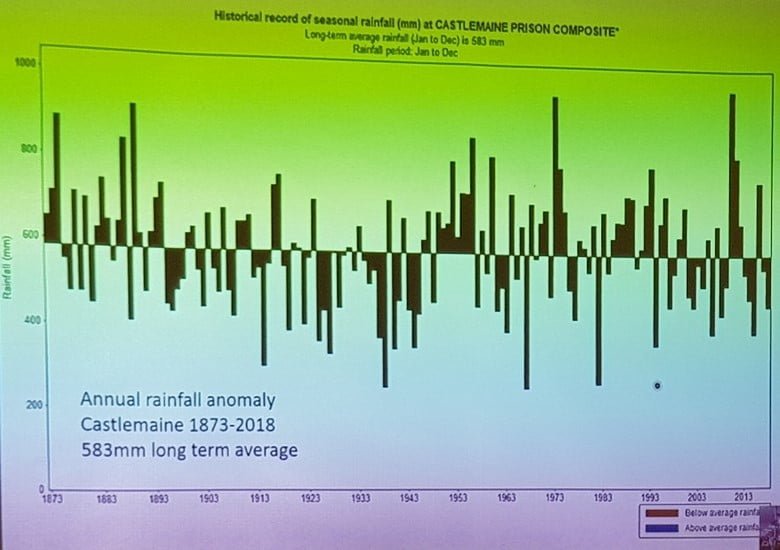
It’s important to understand the distinction between climate variability and climate change.
We’ve always experienced climate variability, as you can see with the chart of rainfall since 1873, above.
Climate change is demonstrated with this chart (below) showing the trend in “extreme” records being broken.
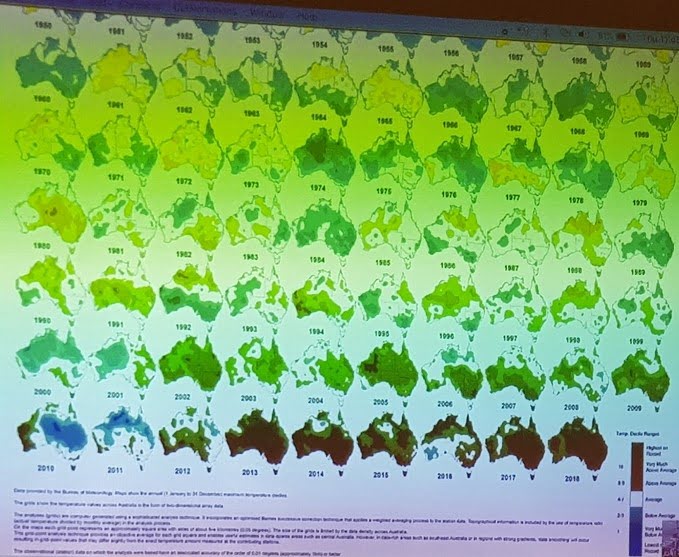
One of the most alarming parts of Graeme Anderson’s MARAG presentation was the climate change predictions for the future.
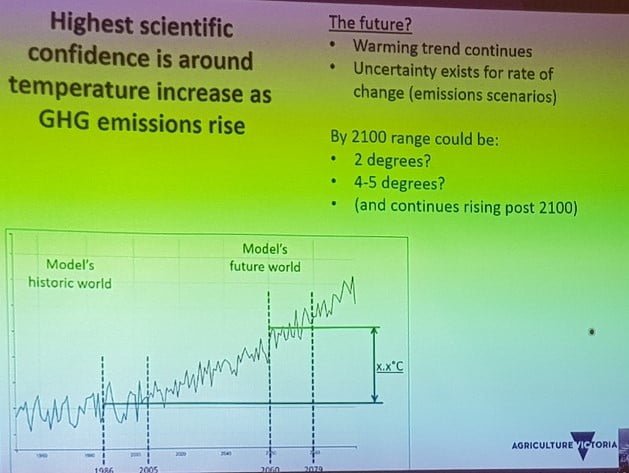
Gardening into the future
So, how do you adapt to the changing climate so you can keep growing food?
At our place in central Victoria, the climate is likely to get hotter and dryer. So it’s important for us to remember that there are already people growing food successfully in hotter and drier climates than ours.
Clearly, we can learn a lot from what they’re already doing.
No matter where you live, climate adaptation comes from going back to basics.
- Look for good design solutions. Work on protecting your land from the elements by creating microclimates like windbreaks and shelter belts).
- Establish year-round perennial groundcovers so there’s no bare soil to blow away.
- Create the most bio-complex agro-ecological system possible in your garden.
- Work on creating your own renewable energy systems.
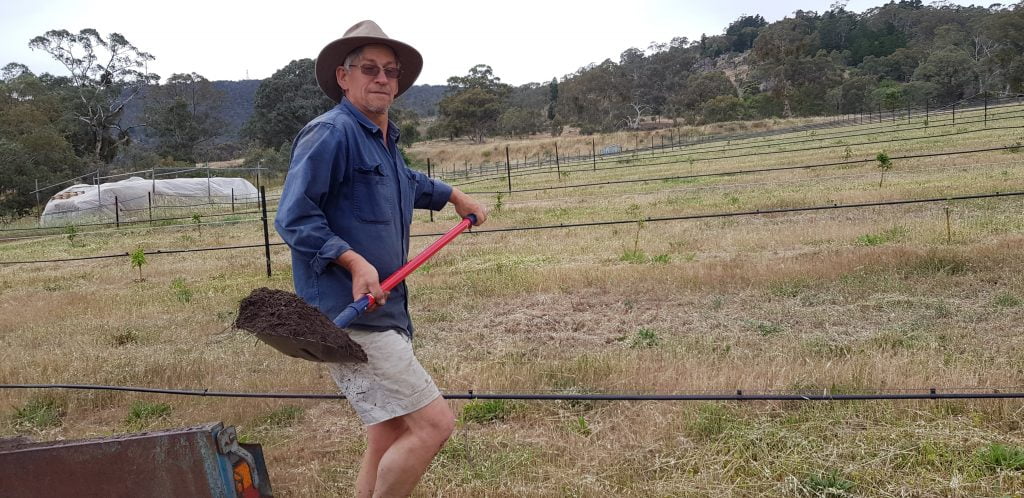
But mainly we need to continue the work we’re all so passionate about, which is improving the soil. The more carbon you can store in the soil, the more rainfall you can capture and store.
Higher soil carbon translates directly to more resilience for crops and animals against drought, flood, storms, frost, pests, and diseases.
As always, everything comes back to the soil!
Related Articles
Choosing the right fruit tree to plant
Choosing the right fruit trees to plant can make a huge difference to how much food you grow and the value you get from your garden.
Managing your fruit trees and frost
Learn about frost in your garden, how it may affect different types of fruit trees, and how to protect them by creating microclimates.
How can you get support for a community orchard?
Find out how to access resources and support to start a community orchard and build food security and resilience.

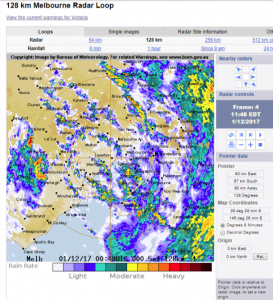


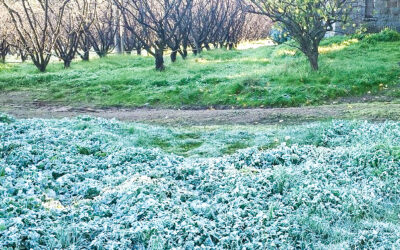



Hi guys
everywhere I read that the climate is becoming hotter and dryer. Well South Gippsland is just the opposite. It is getting wetter and wetter. With our anyway heavy clay soil we are close to being completely water logged in winter. Yes I have added everything suggested and certainly have improved the soil. But I would need a few recommendations to chancel the water in another direction than my veggie garden and orchard. Plus our sheep that weed the paddocks are getting serious problems with their feet in this wet.
Sometimes I am astonished with what plants put up. And they still grow.
Maybe someone has a few ideas. Thanks
Hi Barbara – yes it certainly has been a wet few years. Sorry to hear about your sheep too! Have you looked at any of the permaculture design literature? The use of ‘swales’ – a use of contours to help slow down the movement of water – is popular and can have really powerful results. Brogo Permaculture Gardens have some great videos about how they used swales and trees on their property to reduce water logging (and simultaneously help in drought). Or, finding a local permaculture designer to help you understand the movement of water on your property could be a good start. Meg – GGF team.